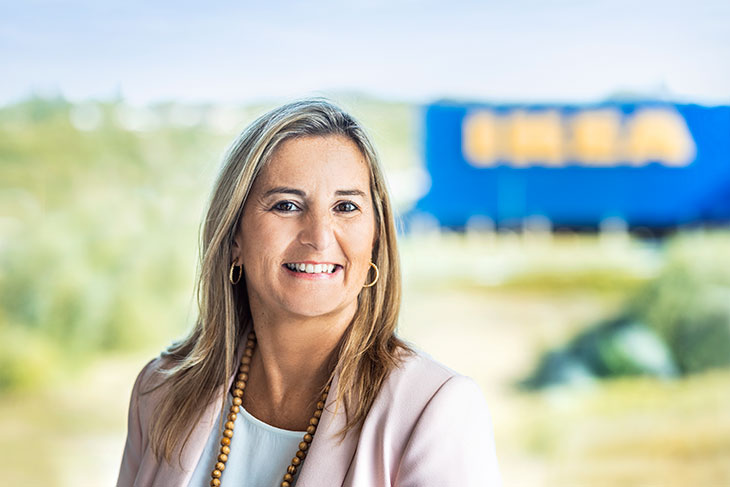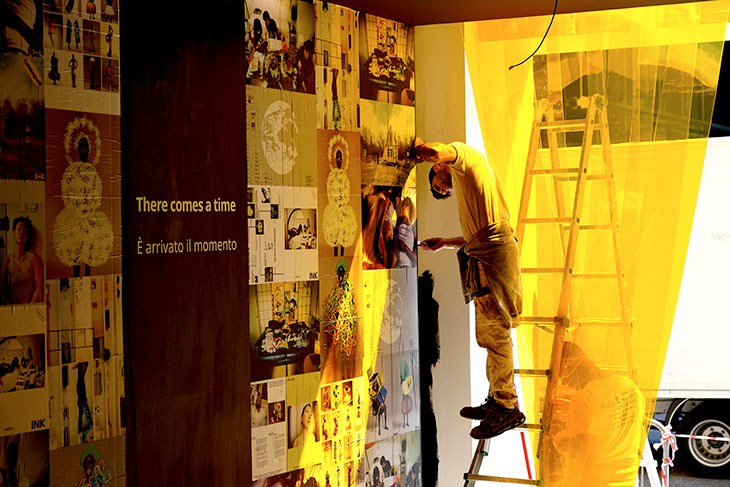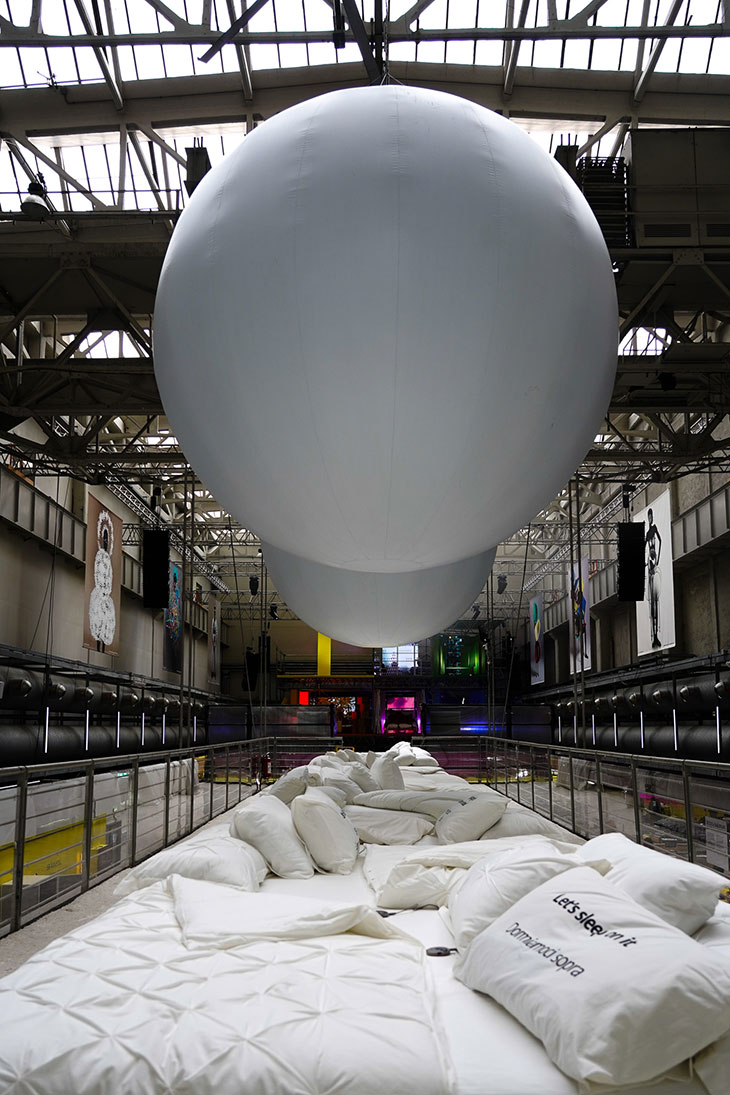
We had the chance to speak with Belén Frau, the Global Communication Manager at Ingka Group, about IKEA’s latest initiative, “1st.” This exhibition at Padiglione Visconti in Via Tortona explores the emotional journey of moving into your first home, perfectly scheduled during this year’s Salone del Mobile.
Belén Frau, along with Asunta Enrile, IKEA Italy’s Country Retail Manager, has orchestrated an impressive agenda for the 2024 design week accompanied week-long event. The schedule was packed with insightful talks and discussions, running from morning until night, featuring prominent voices in design and innovation. Notably, Mark Wilson, the Global Design Editor from Fast Company, hosted a series of compelling talks on June 16th and 17th. These sessions tackled questions about the future of design, sustainability, and the healing power of thoughtful design. Participants included industry leaders from Google, Mattel, What Design Can Do, Marimekko, and more, leaving the attendees with a rich exchange of ideas and visions for the future.
INTERVIEWS
Belén started her career at the Barakaldo store in Spain, she quickly rose through the ranks to become the Country Retail Manager there, and later in Italy. Before assuming her current role, she was the Deputy Retail Operations Manager, overseeing eight IKEA markets and spearheading initiatives in people development and omnichannel retailing. In her current position as Global Communication Manager, Frau leads IKEA’s communication strategy with a focus on purpose-driven messaging that aims to create better homes, improve people’s lives, support the planet, and strengthen the company. Her leadership is instrumental in shaping IKEA’s narrative and ensuring it resonates with audiences worldwide.
In conversation with DSCENE Editor In Chief Zarko Davinic, Belén Frau discusses IKEA’s long-standing tradition at Salone, the “1st” exhibition, and IKEA’s commitment to sustainability, innovation, and making affordable, well-designed furniture.
What brings IKEA to Milan?
There’s a long history between IKEA and Milan, starting with our founder who was inspired by the Salone. He always considered how to bring Italian designs to the masses. His obsession revolved around the idea of democratic design, which incorporates form, function, quality, sustainability, and affordability. Good design is easy at a high price but challenging at a low price. Since our founder’s time, IKEA has fostered strong relationships with numerous Italian suppliers, marking Italy as one of our key supply countries. We’ve been part of the Fuorisalone for 20 years now.

It sounds like a significant tradition, Ikea at Salone.
Yes, indeed. Before transitioning to communications, I previously served as the country manager in Italy for five years, so I have a deep understanding of the background. Particularly in challenging years with complex external factors like geopolitics and the economy, it’s crucial for us to engage in meaningful conversations. This venue offers a unique global impact and insights. We collaborate with Japanese creators and Italian students from the Istituto Marangoni, promoting rich dialogues. More than ever, it’s vital to understand people’s needs and struggles. This year, our theme derives from an insight from our Life at Home report, where 37,000 people worldwide shared that dreaming about the future contributes to a happier life.
IKEA significantly aids in fostering those dreams.
Yes, we help people dream, and what’s a bigger dream than your first home? That’s why our exhibition at Fuorisalone this year emphasizes “firsts” – your first home, your first party, your first move. It’s all about enabling people to dream more and enhancing happiness, especially when the world is filled with enough challenges.
IKEA seems to revisit a lot of archival designs lately. Will this continue?
Absolutely, it’s quintessentially IKEA to stay true to our roots while looking forward. Our values are deeply embedded, influencing every decision. This extends to our approach to artificial intelligence, ensuring it’s responsible. We draw strength from our past to innovate for the future, as seen in our 80 years collection.

There’s been a lot of interest in IKEA’s vintage catalogues. Why do you think that is?
We’ve intentionally sparked curiosity by juxtaposing a modern magazine with vintage catalogues at our DAZED catalogue!!! newsstand. It’s about exploring our archives and innovating with new materials and designs while staying true to our essence of making home life better.
IKEA is also known for its commitment to recycling and sustainability, but you are also often criticized for the same.
As a thought leader, IKEA embraces its role in pioneering sustainable practices. We’re actively seeking new materials and aim for all products to be recyclable by 2027. Last week, I visited our innovative recycling plant in the Netherlands, which is pioneering mattress recycling—a challenging task until now. This initiative is part of our broader effort to foster a circular business model.

Importance of durability over mere recyclability is also a big factor, touching on this notion of everything having to be 100% recycled and how impossible that actually is. Perhaps it’s better to make durable furniture
Exactly. We focus on extending the lifespan of our products. Each store features a Circular Hub for reselling items, and we offer a buyback service to encourage product longevity. We also provide free repair kits to discourage waste. Our proactive approach to sustainability not only meets but often leads market trends, as seen when we phased out single-use batteries and incandescent bulbs in favor of rechargeable and LED options, respectively. I want to think that we are an agent of change, and I really think that every company should feel this responsibility that we are here, and I think it is a good business to be a good business. I think that the fact that we care brings people back. Because when you look at the Edelman Trust Barometer, people want to buy from brands that care, they really care more and more about wellbeing and the environment, especially the youngsters, they want to know what is behind the brand.
I think a lot of people, as you said, feel a connection to their first piece of furniture. This connection is especially strong with your design collaborations, which allow people who can’t afford designer furniture to own a well-designed piece at an affordable price, which is very nice.
That’s why we love to say we’ve democratized design. Previously, when someone moved into their first home, they might have received something from their grandmother, but it often looked boring.

But what about the price of the product?
For us, we begin designing our products with price in mind. While others are raising their prices, we are doing the opposite; you’ve probably noticed. We’re committed to lowering our prices. As soon as our supply costs decrease, we pass those savings directly to our customers. We’re currently investing millions in reducing prices. Although it might not seem financially beneficial during periods of stagnant consumption, we maintain low prices because we understand the importance of being there for people when they need us most. This is how we show we truly care about our customers.
Designers like Ilse Crawford, who have worked with IKEA for years, truly understand design. You might not be familiar with them, but just by looking at their work, you can see that they excel at problem-solving.
It’s all about how we can help people solve the problems they encounter at home, making their environments more relaxed, colorful, comfortable, and sustainable. In our Life at Home report, we analyze data by country; for instance, in Italy, only 24% of people feel their home supports a sustainable lifestyle. Yet, when asked, everyone wants to live sustainably. This disparity shows the significant opportunity we have to influence people. You can lead a better and more sustainable life, which can also save you money. Therefore, we believe we have a crucial role to play.
IKEA also helps when you live in a smaller home.
Exactly, we offer storage solutions, recycling solutions, and more, giving you confidence that a comfortable and functional home isn’t limited by square footage but enhanced by smart living solutions.

You certainly have competitors, that may not prioritize sustainability or other factors.
For us, sustainability is integral; as I mentioned, our democratic design philosophy is 80 years old and includes sustainability. This approach originates from our founder, who grew up in a very poor part of Sweden with limited resources. Sustainability is deeply ingrained in our culture. He was always thinking critically: “What if we didn’t include this part? Would it be cheaper? Is it really necessary?” He believed that being cost-smart is also being sustainable, bringing us closer to the customer by allowing us to lower prices. His was a mind that never stopped pondering how we could be climate-smart, sustainability-smart, and privacy-smart.
And looking ahead, what can we expect from IKEA next year?
We’re excited about our new communication platform, Home Can Do It, which will expand our ability to support better living at home. It’s about empowering people to customize their spaces to their needs and tastes, and we believe this will resonate strongly in the coming year.
So, IKEA is fostering a life-at-home movement?
Yes, after 20 years with IKEA, I can say our purpose is to improve lives. Home should be everyone’s favorite place, and we are committed to making that a reality, especially for those who currently find it challenging.



